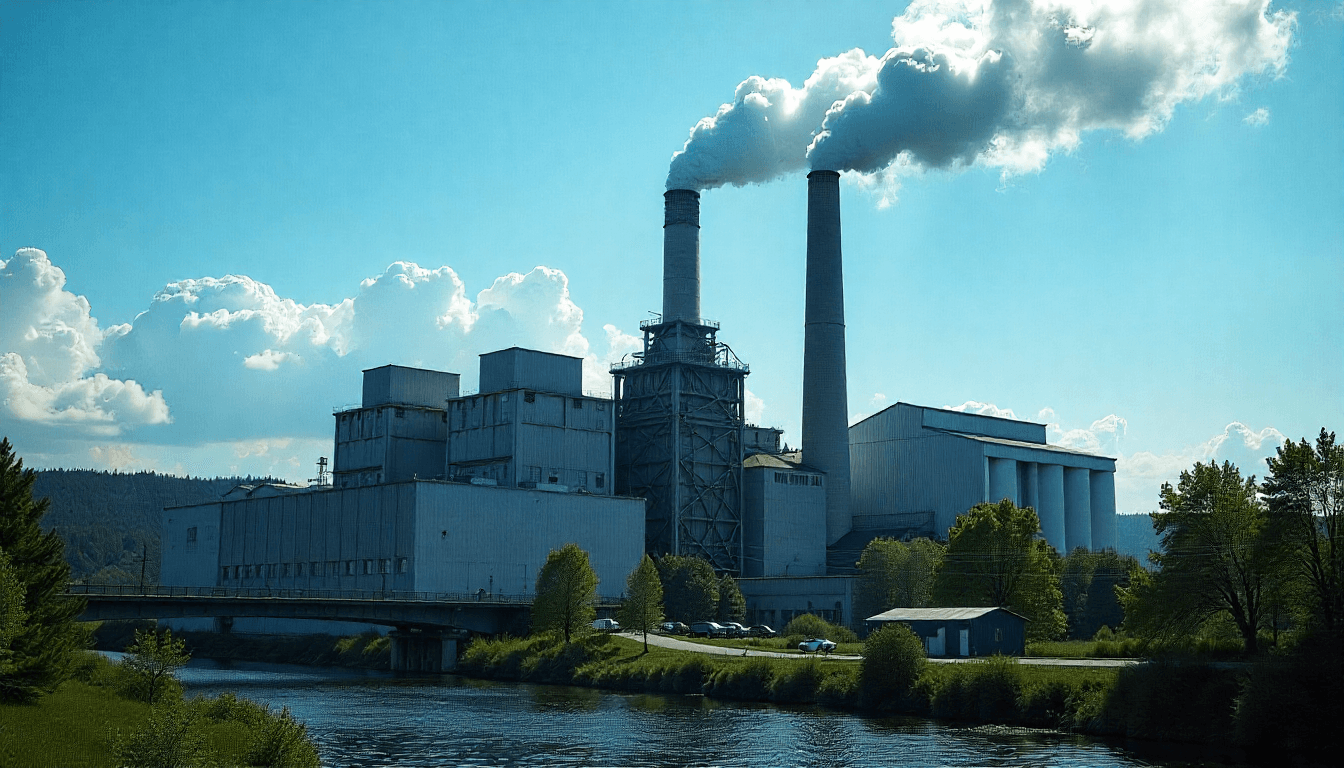The global transition to a low-carbon economy demands more than just a shift to solar and wind power. It requires targeted investment in solutions for hard-to-abate sectors, the industries that are most difficult to decarbonize. A recent $90M clean energy deal has provided a powerful catalyst for this effort, proving that financial innovation can unlock scalable technologies for global decarbonization. This landmark transaction is not just about the numbers; it is a strategic blueprint that demonstrates how private capital can finance carbon removal projects at a price point and scale that move the needle. This article examines a major financial transaction (over $50 million) that is powering the future of sustainability.
Decarbonizing the world’s economy requires a multi-pronged approach. We have seen incredible progress in the power generation sector, with renewables like solar and wind now more affordable than ever. However, heavy industries such as cement, steel, and pulp and paper still rely on processes that generate vast amounts of greenhouse gas emissions. For these sectors, the path to net zero is complex. It requires technologies that can either capture carbon directly from industrial processes or remove it from the atmosphere entirely. Unfortunately, these solutions have often been prohibitively expensive and unproven at scale. Consequently, a gap has existed between the ambition for decarbonization and the financial mechanisms to achieve it. The clean energy deal serves as a vital bridge across that gap.
The Problem with Hard-to-Abate Industries
Industries like pulp and paper have a significant carbon footprint. Their manufacturing processes, which involve burning wood waste, release biogenic carbon dioxide (CO₂) into the atmosphere. While often considered part of a natural cycle, these emissions still contribute to the overall global CO₂ burden. For these industries, transitioning to a zero-emission model is challenging. Their processes are deeply integrated with existing infrastructure and supply chains. Therefore, a complete overhaul is not always economically viable.
The challenge is to find a way to make these industries sustainable without destroying them. It means implementing new technologies that can capture emissions at their source. It also involves creating a viable market for these carbon removal credits. The high cost of carbon capture and removal technologies has long prevented this from happening. It has made it a theoretical solution rather than a practical one. This is what the clean energy deal seeks to change, offering a scalable and cost-effective model that can be replicated across similar industries.
The $90M Transaction: A Strategic Blueprint for Carbon Removal
The landmark $90M clean energy deal is an offtake agreement. A major financial institution has committed to buying carbon removal credits from a company specializing in biogenic carbon capture. This partnership addresses a key challenge in the carbon removal market: the lack of long-term contracts. The agreement provides a crucial revenue stream for the technology provider. It helps them secure additional financing and scale their operations. For the buyer, it represents a tangible step toward achieving its net-zero goals.
The capital is earmarked to finance the retrofitting of existing pulp and paper mills with specialized carbon capture technology. Instead of building new, expensive greenfield projects, this approach leverages existing industrial infrastructure. This significantly reduces costs and accelerates deployment. The carbon captured from these facilities will then be transported and stored permanently underground in saline aquifers. This process ensures the emissions are truly removed from the atmosphere. It is a powerful example of a circular economy model applied to industrial decarbonization. This strategic clean energy deal provides a blueprint for making carbon removal a profitable, scalable business.
A Game-Changer for Cost and Scale
The cost of carbon removal has been a major barrier to its widespread adoption. Many engineered carbon removal solutions have historically cost hundreds of dollars per ton. This price point has made them too expensive for most businesses. However, this clean energy deal breaks that mold. The price for the carbon credits is significantly lower than the industry average. This is due to the company’s innovative approach. They utilize existing infrastructure, and their process uses waste heat from the mills to power the capture technology.
This cost-effectiveness is a game-changer. It makes high-quality carbon removal accessible to a wider range of buyers. This includes corporations with ambitious decarbonization targets but limited budgets. This significant financial commitment sends a strong market signal. It shows that engineered carbon removal is becoming a viable and affordable tool for climate mitigation. It encourages other companies to invest in similar projects. This helps to further drive down costs through economies of scale.
Revitalizing Industries and Communities
The impact of this clean energy deal extends far beyond climate action. It also offers a path to revitalizing a critical industrial sector. The pulp and paper industry, particularly in the United States, has faced years of declining demand and competition. By retrofitting their mills to capture and sell carbon credits, companies can create a new revenue stream. This new revenue can improve their profitability and competitiveness. It helps to secure jobs and sustains communities that depend on these mills.
The offtake agreement ensures a steady, long-term market for the carbon credits. This gives mill owners the confidence to invest in the retrofitting projects. It shows how green finance can create a win-win situation. It benefits both the environment and local economies. It is a powerful model for the just transition. It helps industries that are central to our economy evolve without leaving communities behind.
The Broader Impact on Global Decarbonization
This clean energy deal has created a ripple effect across the global decarbonization landscape. It proves that there is a strong demand for high-quality, verifiable carbon removal. This will inspire more private companies to enter the market. It will also encourage more investors to fund these types of projects. It is a clear signal that the market for carbon removal is real and rapidly maturing.
This strategic investment also highlights the importance of partnerships. It shows that to solve our biggest climate challenges, we need collaboration. We need collaboration between financial institutions, technology developers, and heavy industry. Governments also play a crucial role. They can provide supportive policies and tax credits that further reduce project costs. This accelerates the transition to a low-carbon economy. This transaction provides a scalable and replicable model for other hard-to-abate sectors. It is a blueprint for tackling emissions from cement, steel, and chemicals. The world is watching. It now has a clear path forward. This path is based on market-driven solutions rather than relying solely on government mandates.
Conclusion: A New Blueprint for Green Finance
The $90M clean energy deal for biogenic carbon capture represents a pivotal moment in the fight against climate change. This transaction proves that significant private capital can be mobilized to fund innovative solutions for global decarbonization. By targeting a hard-to-abate industry and creating a scalable, cost-effective model, this deal has set a new standard for green finance. It has moved carbon removal from an expensive, theoretical concept to a practical, market-ready solution. The investment not only helps a company meet its net-zero goals but also revitalizes a key industrial sector and provides a blueprint for others to follow. The future of a low-carbon economy is not just about what we build, but how we finance it. This deal provides a powerful example of how to do it right. It is a legacy of innovation and collaboration. It is a legacy that will help us build a more sustainable and prosperous future.



Коментарі